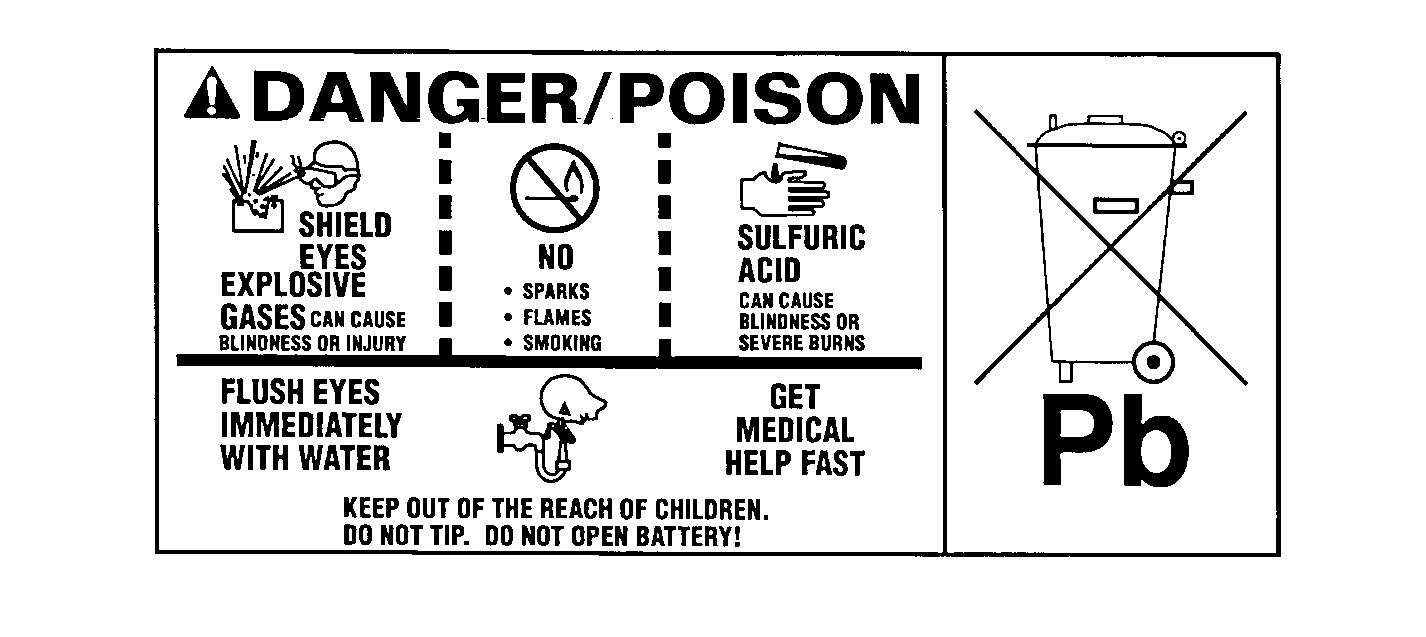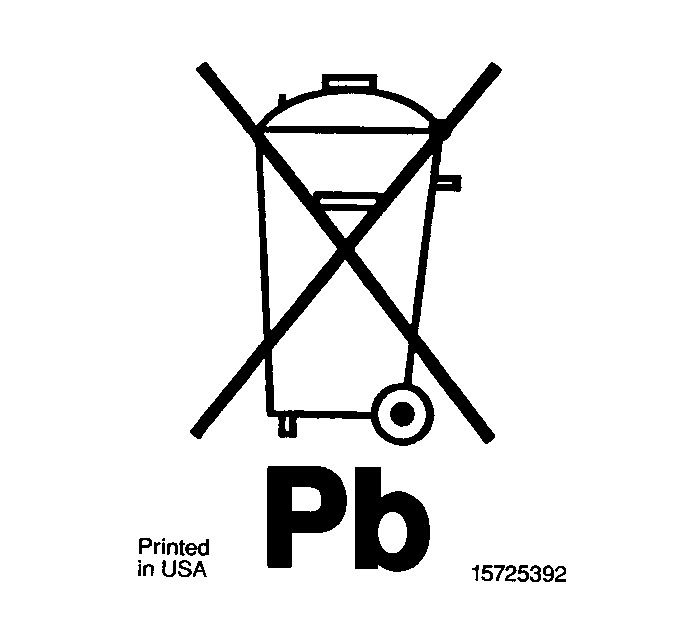
Caution: Batteries produce explosive gases. Batteries contain corrosive acid.
Batteries supply levels of electrical current high enough to cause burns.
Therefore, in order to reduce the risk of personal injury while working
near a battery, observe the following guidelines:
| • | Always shield your eyes. |
| • | Avoid leaning over the battery whenever possible. |
| • | Do not expose the battery to open flames or sparks. |
| • | Do not allow battery acid to contact the eyes or the skin. |
| - | Flush any contacted areas with water immediately and thoroughly. |
The maintenance free battery is standard in all GM vehicles. The battery
is completely sealed except for two small vent holes in the sides. The vent
holes allow a small amount of gas produced in the battery to escape.
The battery provides the following three functions in the electrical
system:
| • | The battery provides a source of energy for cranking the engine. |
| • | The battery acts as a voltage stabilizer for the electrical system. |
| • | The battery can provide energy when the electrical load exceeds
the output of the generator, for a limited time. |
Battery Disposal Label

This battery is made up of components that could be hazardous to the
environment. Dispose of the battery as required by regulations.
Electrolyte Freezing
The freezing point of the battery electrolyte depends on the battery's
specific gravity.
Freezing a battery can ruin it.
Protect the battery from freezing by keeping it fully charged.
With the green dot showing in the built-in hydrometer, the battery will
not freeze until the temperature drops below -32°C (-25°F).
A fully charged battery will not freeze until the temperature drops below
-54°C (-65°F). Refer to
Battery Hydrometer Displays Yellow Dot
.
Battery Ratings

The battery specification
label contains useful information for servicing the battery. The information
includes test ratings, original equipment and recommended replacement part
numbers. Refer to
Battery Usage
.
The battery has two ratings: Cold Cranking Amperage (CCA) and Reserve
Capacity.
| • | Cold Cranking Amperage indicates the battery's ability to crank
the engine during cold temperatures. |
| • | The CCA rating is the minimum amperage the battery must maintain
for 30 seconds at -18°C (0°F), while staying above 7.2 volts. |
| • | The actual performance of the battery varies with temperature,
electrical load, and the condition of the vehicle's electrical condition. |
Reserve Capacity
Reserve capacity is the maximum amount of time (in minutes) it will
take for a fully charged battery, being discharged at a constant rate of 25
amperes with the temperature remaining at 27°C (80°F), to reach
a terminal voltage of 10.5 volts.
| • | Reserve capacity is an estimate of how long a person may operate
the vehicle under the following conditions: |
| - | A minimum electrical load (most accessories are turned off). |
| • | How long the battery will actually last when the vehicle is being
driven without generator output depends on the following factors: |
| - | The condition of the battery |



